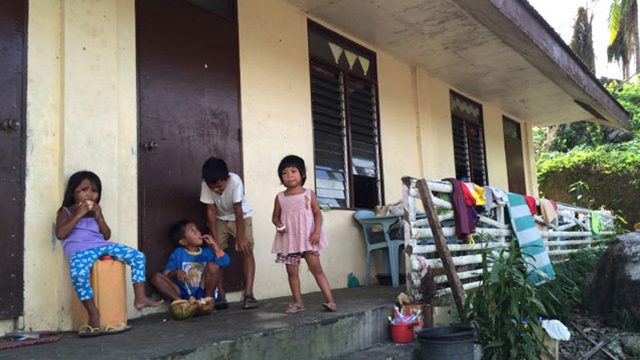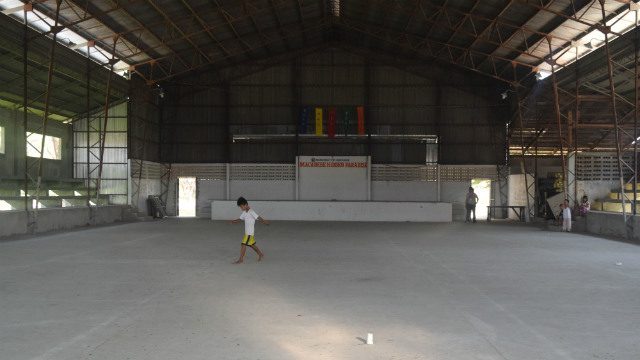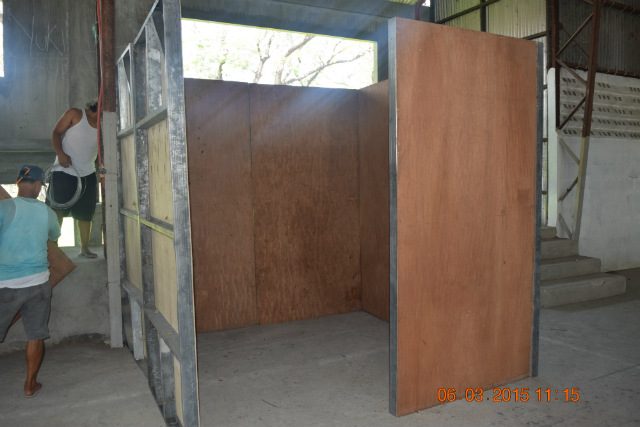SUMMARY
This is AI generated summarization, which may have errors. For context, always refer to the full article.

In the past years, schools have been the go-to site every time a calamity strikes because they are oftentimes the only readily available structures in communities that can accommodate a large number of people.
The perennial use of schools as evacuation centers, however, has affected the operation of schools in the aftermath of disasters.
Evacuees too have also been known to get sick, or worse, die in evacuation centers because of lack of proper sanitation. This is because they were not really built for human habitation over long periods of time.
Worse, during Super Typhoon Yolanda (Haiyan), a number of schools were inundated by flooding and storm surges because they happened to be in hazard-prone areas. (READ: Guiuan, Eastern Samar: Evacuation centers crumbled)
Multi-use facilities
But while evacuation centers are important during disasters, what happens to them during the dry season when there are no evacuees? This makes it difficult to justify the use of public funds to build permanent evacuation centers.

Macabebe, a municipality in Pampanga which is prone to flooding, currently has two identified permanent evacuation centers, according to Jomel Cruz, the municipal administrator and disaster management officer. The main one can house 1,000 individuals, while the secondary one can house 500 more individuals.
Just recently, the town’s disaster management office got a donation from international organizations – cubicles that serve as small rooms for each family.
“They are like cubicles that give privacy to those 1,000 people, per family. We would make that a large cubicle where around 5 families can stay,” Cruz said. During disasters, Cruz said they segregate families of evacuees based on who they know.
The cubicles need an hour or two to set up. When the evacuees go back to their homes, those cubicles are then put back into the storage room.

While the typhoon season is still months away, the Macabebe evacuation centers are used for trainings conducted by the Technical Education and Skills Authority (TESDA). They also serve as event halls in local gatherings.
Safe zones
It is also important to make sure that evacuation centers are not constructed in areas that are vulnerable to natural hazards.
At the Project Agos workshop in Angeles Pampanga, Allan Tabell, Department of the Interior and Local Government’s Disaster and Information Coordinating Center (DILG-CODIX) chief said, there were instances when temporary evacuation centers turned into mass graves.
A Project Noah report about Super Typhoon Yolanda which was published in academia.edu in 2014 said that “some of (the people who did evacuate during the storm) still fell victim to the typhoon as 68% of evacuation centers were overwhelmed by storm surges.”
It also said that detailed hazard mapping is essential for any community, especially those living in hazard-prone areas because “if they did not know the location of safe evacuation sites due to the absence of detailed and accurate maps, loss of lives would still be inevitable.”
To further improve disaster management in the country, the government started allocating more funds for evacuation centers and disaster equipment, according to Tabell.
“Starting 2015, the government has begun allocating amounts to build and to improve DRRM operations and equipment. More than 400 LGUs will be provided funds to build evacuation centers and equipment,” Tabell said.
He stressed, however, that the establishment of evacuation centers should be carefully planned and should follow standards before money is shelled out.
Standards
As of posting, the National Disaster Risk Reduction and Management Council (NDRRMC) is still developing standard rules for building permanent evacuation centers.
Meanwhile, the Department of Public Works and Highways (DPWH) and DILG are still working on the design specifications, Tabel said. (READ: Senate report: PH lacks rules for disaster shelters)
Cruz said that Macabebe’s evacuation centers are far from areas prone to flooding.
“[The evacuation centers] are a kilometer or two away from the center of Macabebe. The worst thing that can happen there is, if the flooding is worse, there will be flooding in the [evacuation centers]. And for the longest time, that has not happened yet. Those places had not been flooded even during habagat. The evacuation centers would not be affected by storm surge or waterspouts, as well. So that can become the long term,” he said. – Rappler.com
Add a comment
How does this make you feel?
There are no comments yet. Add your comment to start the conversation.